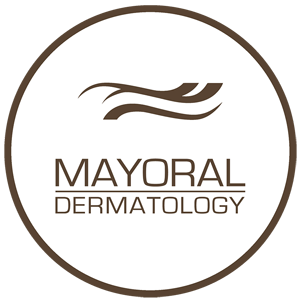Psoriasis is an incurable skin condition that presents rapidly spreading “plaques” over all areas of the body. These plaques consist of thick layers of silvery-white dead skin cells that itch, bleed and turn bright red when severely inflamed. Considered an immune-mediated skin disease with a definite genetic component, psoriasis can negatively affect an individual’s quality of life due to disfigurement, restriction of movement and joint inflammation.
Resulting from a faulty immune system that mistakes healthy skin cells for pathogens harmful to the body, psoriasis plaques emerge when production of skin cells accelerates as the misguided immune system attempts to overwhelm and eliminate the “bad” cells. Because the body is not given the normal amount of time it needs to shed dead skin cells, these flakes of dead, dry skin begin to accumulate near the surface of the skin, eventually developing into plaques that are hard to the touch, intensely itchy and oftentimes, painful.
People diagnosed with psoriasis frequently suffer worsening of the disease when stressed or when exposed to different environmental factors such as extreme heat or cold. Severity of a psoriasis condition is rated according to how much of the patient’s body is covered by plaques. Mild psoriasis affects less than three percent of the body; moderate psoriasis affects between three and 10 percent; and severe psoriasis cover over 10 percent of the body with scaly plaques.
Mild psoriasis is usually treated with ointments containing salicylic acid, which is also used to heal acne and various skin issues such as corns, warts, calluses and dandruff. Belonging to a type of medication referred to as keratolytic, salicylic acid reduces swelling and redness associated with psoriasis while also softening the thick, scaly lesions for easy removal. Patients apply salicylic ointments to psoriasis patches several times daily or several times each week, depending on the strength of the cream.
Ointments containing steroids/corticosteroids may also be prescribed for mild psoriasis and acne. Corticosteroids play an important role in managing inflammatory responses within the human body by reducing redness, swelling and pain of inflamed areas. Topical steroids are available in seven different strengths, with a Class 7 steroid considered “least potent” and a Class 1 steroid “superpotent”. When used in mild psoriasis treatment, a Class 1 or Class 2 steroidal cream is usually effective.
Certain restrictions apply when using topical steroids that reduce the ability of psoriasis sufferers to contain their condition. For example, steroid ointments should not be applied to psoriasis patches for more than three weeks unless under a doctor’s supervision. In addition, steroids should never be used near the eyes. Consistent exposure of eye membranes to creams containing steroids may cause cataracts and exacerbate an existing glaucoma condition. Using topical steroids for an extended amount of time may facilitate bruising, affect skin pigmentation and cause stretch mark-like scars on the skin.

